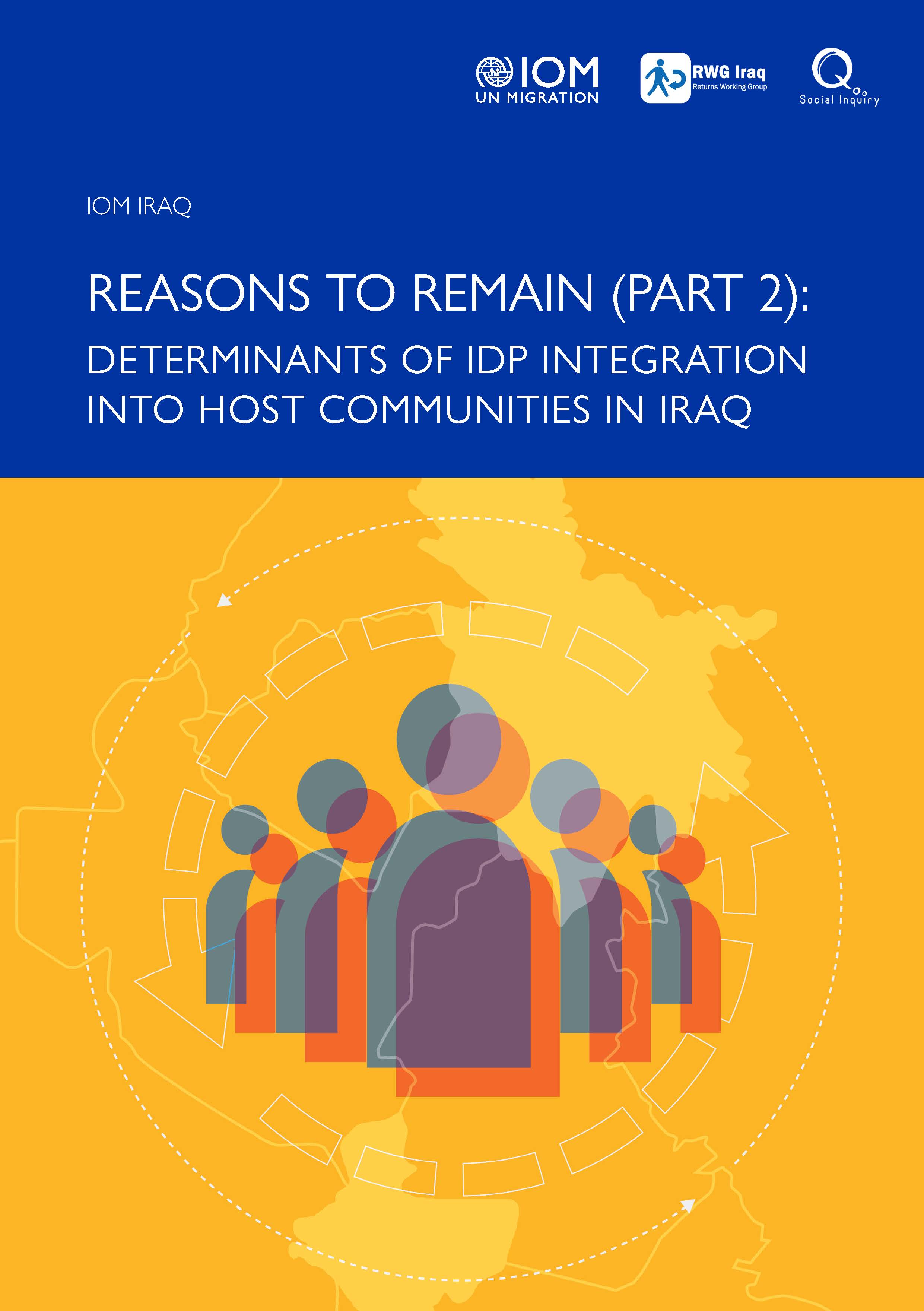Reasons to Remain (Part 2): Determinants of IDP Integration into Host Communities in Iraq
Nearly five years since the start of the ISIL-conflict and over a year since its official end, 1.8 million Iraqis remain internally displaced, with almost half of them in displacement for more than three years.
As the rate of return slowed in 2018, attention must also be paid to the ways in which IDPs are resolving their displacement in relation to the communities they live in now. Therefore, it is necessary to also understand the dynamics of IDPs in their place of displacement, potentially on a path to another durable solution: local integration.
Thus, in order to better understand what local integration may look like in Iraq, IOM Iraq, the Returns Working Group (RWG), and Social Inquiry implemented a targeted, in-depth study of Sulaymaniyah and Baghdad Governorates.
The purpose of this study is to identify which factors help or hinder local integration, utilizing data on perceptions and living conditions of IDPs displaced for more than three years and data collected from host community residents. The purpose here being to guide strategies and interventions to support both those displaced and those who host them move towards a new dynamic where all are equally woven into the local fabric at large.
The findings highlight that socioeconomic, cultural, and spatial factors at the individual and structural levels matter for integration and acceptance. Most of the evidence collected here points to the fact that better integration and acceptance is found among more socioeconomically equal communities, those with strong but more elastic social cohesion, and in places where host communities feel historical grievances related to violence and conflict have been dealt with satisfactorily.
While it is difficult to find a single location that has all three of these characteristics, most locations in this study, and in Iraq in general, have at least some combination of these. Interventions therefore should be targeted toward reducing inequalities, building more inclusive social cohesion, and redressing past wrongs.
